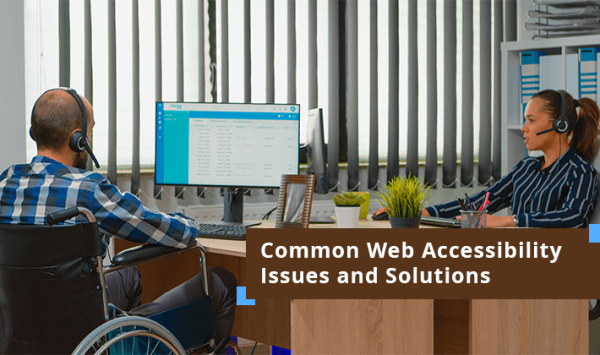In today’s digital world, websites are essential for businesses of all sizes. They provide a way to connect with customers, promote products and services, and build brand awareness. However, for people with disabilities, websites can be inaccessible. This means that they may not be able to use the website at all, or they may have difficulty navigating and using it.
Common Web Accessibility Issues
There are many common website accessibility barriers. Some of the most common include:
- Lack of text alternatives for images and videos. This can make it difficult or impossible for people who are blind or have low vision to understand the content of the website.
- Poor color contrast. This can make it difficult for people with visual impairments to see the text and other content on the website.
- Non-navigable websites. Websites that cannot be navigated using a keyboard or other assistive technology can be difficult or impossible for people with mobility impairments to use.
- Complex page layouts. Complex page layouts can be difficult for people with cognitive disabilities to understand.
- Audio and video content without transcripts. Audio and video content without transcripts can be inaccessible to people who are deaf or hard of hearing.
Solutions to the Web Accessibility Issues
There are many solutions to these accessibility barriers. Some of the most common solutions include:
- Providing text alternatives for images and videos. This can be done by adding a brief description of the image or video to the HTML code.
- Using high-contrast colors. This can be done by choosing colors that have a high enough contrast ratio to be easily seen by people with visual impairments.
- Making websites navigable using a keyboard. This can be done by adding keyboard shortcuts to the website’s navigation menus and other elements.
- Simplifying page layouts. This can be done by using clear and concise language, avoiding clutter, and using consistent formatting throughout the website.
- Providing transcripts for audio and video content. This can be done by creating a text transcript of the audio or video content, or by providing a link to a transcript that is created by someone else.
- By addressing these common accessibility barriers, businesses can make their websites more accessible to people with disabilities. This can help to improve the user experience for everyone, and it can also help to avoid legal liability.
Here are some additional resources for learning more about website accessibility:
- Web Accessibility Initiative (WAI): https://www.w3.org/WAI/
- The Web Content Accessibility Guidelines (WCAG): https://www.w3.org/TR/WCAG21/
- The WAVE Accessibility Evaluation Tool: https://wave.webaim.org/
- The AChecker Accessibility Evaluation Tool: https://achecker.org/
Conclusion
Website accessibility is crucial for both legal compliance and business success. By removing barriers and implementing solutions like alternative text for images, improved color contrast, responsive design, simplified navigation, and accessible multimedia content, businesses can create an inclusive online environment. Let’s make the web more inclusive for everyone.





